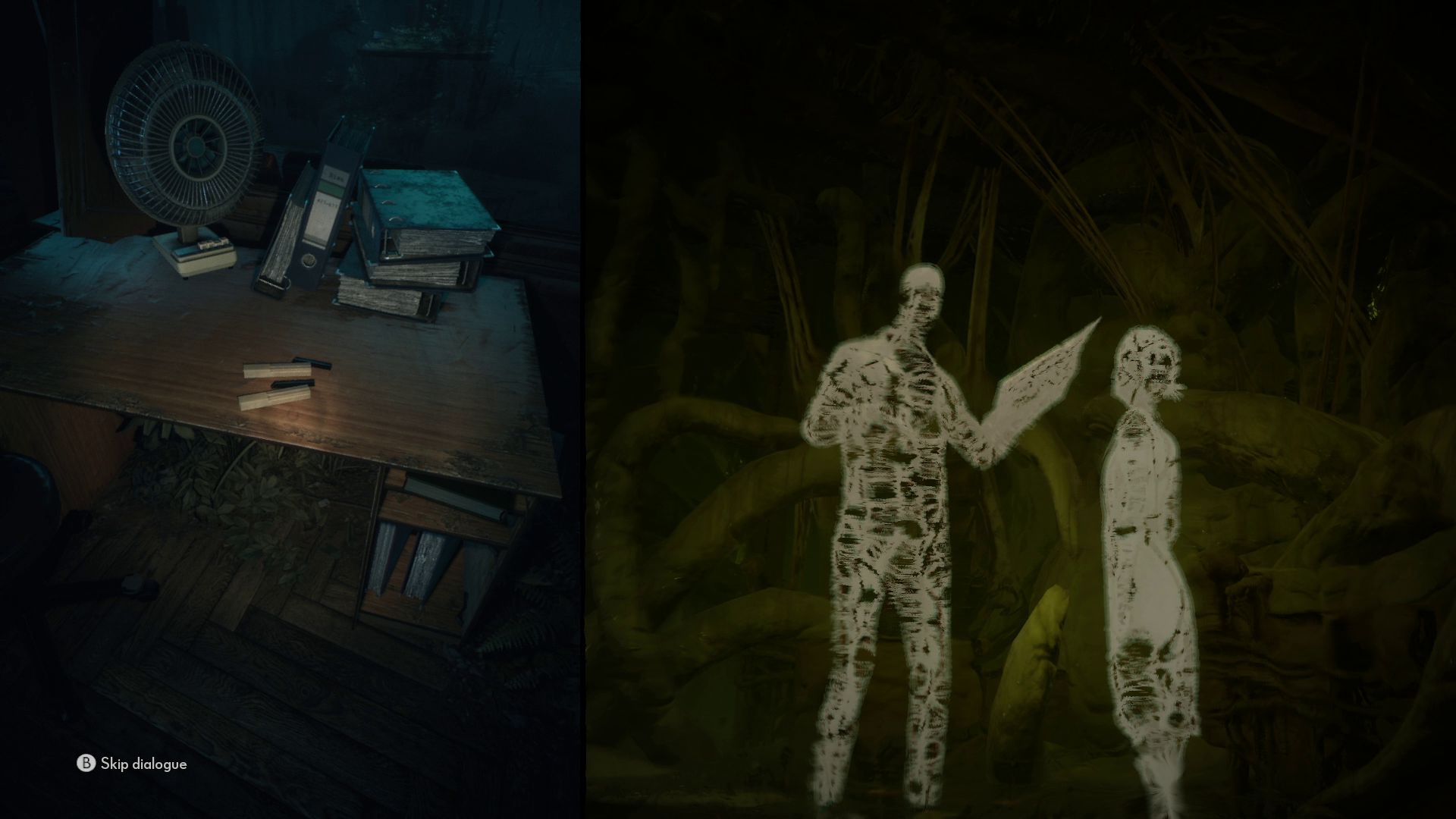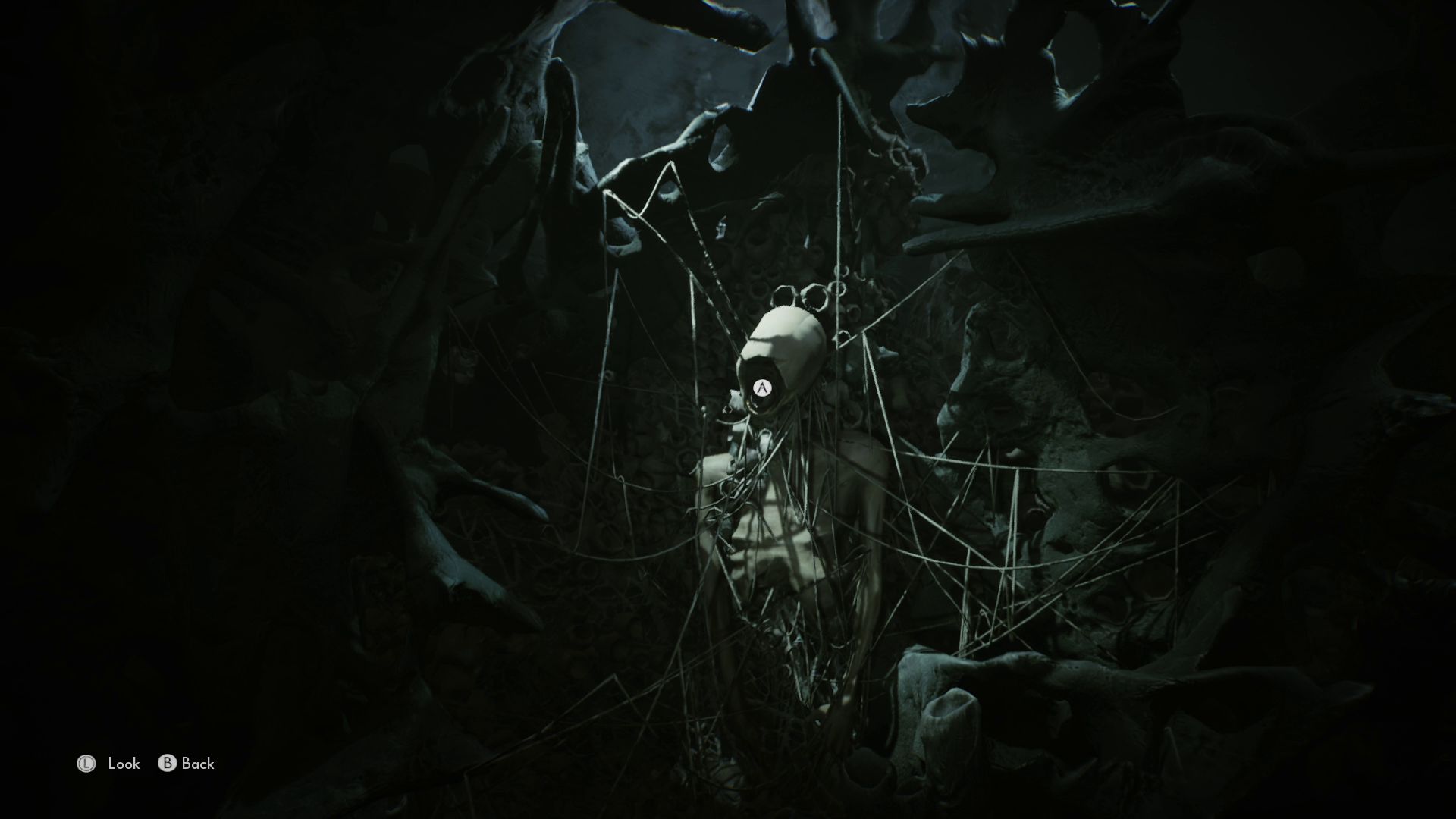I would not bring this up, except the extremely breathy deadpanism of Arquette’s very-sincere-while-saying-outlandish-things delivery did remind me of the performances in The Medium. And honestly, The Medium comes out on top here, both in terms of its performances and its story coherence and general originality. But it’s also about exactly as horrific. If that sounds like damning with faint praise, it is. But I still enjoyed The Medium a lot. The titular ghost talker is Mariane, an Polish orphan who has been able to see the dual realities of life and the afterlife ever since she can remember, especially when the dead have something pressing they need to communicate. Though this does make me question the wisdom of the undertaker who chose to adopt her. One day she receives a mysterious phone call pleading for help coming from an abandoned workers holiday resort. It was abandoned after a massacre, and so I also question the wisdom of Mariane in going there, since it feels like a fly accepting an invitation to the annual Arachnid Giant Web Convention And Fly Eating Revue. But hey ho, so stories are made. The abandoned resort, which is suitably decayed and creepy, is exactly what you’d expect - which is to say they are not what they seem. The mystery at the heart of The Medium is actually quite a complicated story that makes me wish I knew more (or indeed anything) about post-war Poland, but the game articulates it well. I understood everything that was taking place. The problem is that it somehow manages to include every terrible thing you can think of, which makes it very difficult to try and explain to someone else. It touches on arson, the Secret Police, elder abuse, domestic abuse, child abuse, child murder, the Holocaust, and heavily-implied pedophilia (as in, he’s maybe technically not committed a crime yet, but he’s definitely in the run up to it, officer). And the game sort of manages to get away with not dealing with any these topics in-depth, glancing over all of them with obvious metaphor and memory and flashbacks. As such, it’s impossible for it to get any of these topics very wrong. You’re just not going to leave thinking it did any of them right, either. This littany of tragedy is borne admirably by the cast, though, especially Mariane, who is that breed of protagonist who narrates her thoughts out loud to herself. She has a leather jacket and a spunky, no-nonsense attitude that screams, “Watch out, world, I’m not afraid to climb over a wall to get into an abandoned building!” and I liked her a lot. So step aside, Ms Arquette. Mariane spends most of her time solving puzzles that have one foot in the spirit world and one in the real, and The Split, as it is called, is probably my favourite thing about the game. The two realities are sort of superimposed on each other, and Mariane sees both at once (which must be a real migraine inducer). This is represented to the player as a split screen, like playing GoldenEye multiplayer but one of you is having to play a version where the Complex level is inspired by the works of surrealist Polish artist Zdzisław Beksiński. It’s cool, most notably in cutscenes, where different camera angles will be used either side of The Split to show different perspectives on the same event. It’ll emphasise that when Mariane is talking to a ghost child with an arm missing, she is in fact also talking to an empty room. There’s also a great chase scene where Mariane is running through a landscape that flickers between dead and alive as she moves through it. Most of the puzzles focus on traversal: figuring out how to get to a new place you need to go on both sides of The Split. The dead side of things is often more whole than the live side, since it operates a lot from memory - so a staircase collapsed in real life will still be standing in death, for example. You can also save a few trapped spirits by exploring their old rooms, listening to ghostly memories and figuring out who they are. You’ll use sources of “Light” - echoes of happy memories - to shock generators back to life, or protect yourself from swarms of moths. But as creepy as the dead side of The Split looks, like a wasp nest full of doll faces, and for all that you are pursued through both halves of it by a hulking monster with bat wings and too-long legs who mutters about wearing you like a skinsuit, The Medium just isn’t scary in the slightest. There are scenes where you have to creep around holding your breath to hide from this monster, The Maw, and scenes where it’s chasing you, but I never really felt like I was in any real jeopardy. And that’s despite the fact that all the dead people have doll masks and I have a genuine, almost pathological fear of dolls. Bloober Team are usually good at giving me the shivers, as they did in both Layers Of Fear and Observer, but The Medium did not. I think it’s perhaps because so much of its horror is rooted in the uncanny, the normal made strange, and to Mariane, who is our entry point into this world, The Split is actually quite mundane and normal and a bit of a nuisance. She mostly approaches it with compassion and sadness, and through her I felt like I had a degree of mastery over it all, which isn’t conducive to peeing my pants in fear. Despite this, I did enjoy The Medium for what it was, which feels more like a set-piece puzzle game in a cool gothic setting. I wouldn’t be averse to a game where I just played as Mariane and went around helping different spirits move on from everyday death and tragedy, as opposed to the dramatic massacre and childhood trauma that seems to beset every single character in The Medium. Indeed, perhaps Bloober Team really should approach NBC with a three-season treatment…


